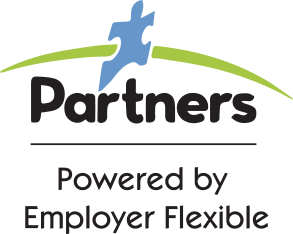Spiraling Gas Prices are Pumping the Breaks on the Return to Office
Spiraling Gas Prices are Pumping the Breaks on the Return to Office

For many businesses this was to be the summer where employees returned to the office from remote and hybrid work as the country got a handle on the COVID-19 pandemic.
Of course, 2022 has brought its own set of unique challenges with the Russian invasion of Ukraine which has sent already inflationary gas prices soaring to record highs.
“As the effects of the pandemic have waned, a new opponent to in-office work has entered the arena: gas prices,” writes Tyler Kern for MarketSacle.
As a result, the “new normal” for many continues to be a combination of hybrid work between home and the central office or even a return to work-from-home set-ups.
Pain at the Pump: Gas Prices Soar to New Highs
Inflation is felt across all sectors but nowhere more acutely than at the pump where U.S. gasoline prices reached a record high of $4.622 per gallon over Memorial Day.
If those prices were not scary enough, the American Automobile Association (AAA) reported that this could be the calm before the storm for pump prices.
“Crude oil has moved above $115 a barrel due to fears of further global supply constraints caused by a European Union (EU) ban on Russian oil exports. And domestic gas demand may again start to climb as drivers duel up for the three-month-long summer travel season,” said Andrew Gross, AAA spokesperson.
The national average for a gallon of gas of $4.62 is 45 cents more than a month ago, and $1.58 more than a year ago. Those prices could still be rising because of summer travel.
“So far, the pent-up urge to travel caused by the pandemic outweighs high pump prices for many consumers,” said Gross. “But 67 percent of drivers recently surveyed told us they would change their driving habits if gas hit $4.50 a gallon. That number rises to 75 percent at $5 a gallon.”
If prices hit that $5 mark average, then experts think Americans down the road will be driving less, for both leisure and going into work.
“I don’t think as many people are going to hit the road, and if they do, I think a good portion are going to be staying close to home,” Patrick De Haan, head of petroleum analysis at GasBuddy told CNBC.
A Return of Hybrid and Work-From Home Solutions
For many workers, who experienced working from home for the first time during the pandemic, convincing them to return to their commutes was already a chore and today’s gas prices are giving employees another reason to keep away from the office.
Bill Kasko, president and CEO of the Frontline Source Group, told MarketScale that employees are once again touting the virtues of hybrid work and he sees this as a challenge for businesses moving forward.
Hybrid work, a combination of work-from-home remotely and an in-office activities, is continuing to be a popular path for many.
Statista reported that a survey conducted last year found that less than 1 in 4 organizations were committed to a full-time return to office on a similar scale as before the pandemic.
That survey found:
- 21 percent plans to return to office-based structures once situation is over
- 16 percent will relax work-from-home rules, but will still be largely office based
- 29 percent committed to remote working, and will evolve operations to support a hybrid workforce in the future
- 22 percent currently monitoring productivity and well-being, and considering retaining a remote structure
Workplace Flexibility is Now the Norm
The survey results above would have been shocking prior to the pandemic but both employees, and employers, have gotten a taste of remote work and hybrid workforce solutions and many embrace them.
The O.C. Tanner 2022 Global Culture Report argues that the future of work is a combination of workplaces, with each playing their vital roles in productivity.
“The pandemic convincingly clarified that how work gets done is more important than where it gets done,” said the report authors. “Data confirms the office is more conducive to certain types of work than remote locations, and vice versa. Organizations that adopt a hybrid workplace can help employees thrive by tailoring space to the work best done there – and by staying flexible.”
O.C. Tanner envisions some tasks hard and easier at home such as:
- Think Creatively: Easier at Home
- Meet Deadlines: Easier at Home
- Advancer Career: Harder at Home
- Make Personal Connections with Colleagues: Harder at Home
- Ensure All Team Members Have a Voicer in Decisions: Harder at Home
“Ultimately we can exchange a rigid approach (that many would argue is obsolete) for flexible, co-created solutions that better enable employees to thrive,” says the report breakout on hybrid work. “To be sure, hybrid work is a work in progress, but it is also a new benchmark in personalization that greatly improves employee experiences.”
Hybrid Workplace: Best of Both Worlds?
Employees appear stuck between the two worlds of remote work and in-office work, craving the needs of both models with research showing:
- 73 percent of employees preferring the option to keep working remotely
- 67 percent also wanting more in-person interactions with colleagues
Hybrid work then is a model which can make both camps above happy, allowing for the flexibility of remote work while still offering the in-person interactions of the traditional office.
Bosses, according to O.C. Tanner, seem to agree on the merits of hybrid work with:
- 68 percent of executive in the U.S, think employees should be in the office at least three days a week
- Only 30 percent are worried about the negative effects of the hybrid model on their workplace culture.
When it comes to successful hybrid work models, the following factors stood out as important to employees:
- 68 percent – Career Development Program
- 65 percent – Flexibility to Choose the Number of Days Worked Remotely
- 65 percent – Clear Expectations for Availability When Working Remotely
- 64 percent – Flexible Workspace in the Office
- 58 percent – Opportunities for In-Person Social Connection with Coworkers



